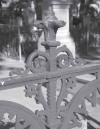Abstract
The considerations about materials and construction technologies are just one of the possible sights to approach architectural production in a historic time. On this sight, monuments and urban furniture on cemeteries in the nineteenth century are testimonies of production procedures related with most important public spaces on cities. Overcrowded parochial cemeteries and sanitary regulations supposed the foundation of a new urban form. That’s not only a sample of the artistic ideas based on historic and academic traditions, but the reproduction of monuments and the prefabrication of urban furniture. With cast iron fences and gravestones, prefabricated for city squares and cemeteries, there was urban furniture for dead and alive alike. It was made from industrial procedures and offered by catalogues from the first industrialized countries ironworks to all around the world. Valencia’s Municipal Cemetery (Venezuela) is a unsettled study case. Its conservation is an industrial archaeology issue that wold be part of the urban memory of the city and could contribute to explain its trade relationships trough its port to the world during the last decades of the Nineteenth Century.Apuntes is registered under a Creative Commons Attribution 4.0 International Public License. Thus, this work may be reproduced, distributed, and publicly shared in digital format, as long as the names of the authors and Pontificia Universidad Javeriana are acknowledged. Others are allowed to quote, adapt, transform, auto-archive, republish, and create based on this material, for any purpose (even commercial ones), provided the authorship is duly acknowledged, a link to the original work is provided, and it is specified if changes have been made. Pontificia Universidad Javeriana does not hold the rights of published works and the authors are solely responsible for the contents of their works; they keep the moral, intellectual, privacy, and publicity rights.
Approving the intervention of the work (review, copy-editing, translation, layout) and the following outreach, are granted through an use license and not through an assignment of rights. This means the journal and Pontificia Universidad Javeriana cannot be held responsible for any ethical malpractice by the authors. As a consequence of the protection granted by the use license, the journal is not required to publish recantations or modify information already published, unless the errata stems from the editorial management process. Publishing contents in this journal does not generate royalties for contributors.


